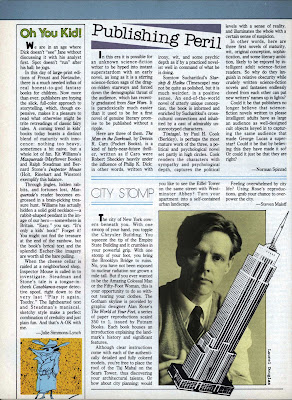Book Review: 'The Road to Corlay' by Richard Cowper
3 / 5 Stars
'The Road to Corlay' was published by Pocket Books in September 1979. The striking cover painting is by Don Maitz; it seems safe to conclude that it was inspired in some part by John William Waterhouse's famous oil painting 'The Lady of Shallot' (1888).
Richard Cowper was the pen name used by the British author John Middleton Murray, aka Colin Murray (1926 - 2002). 'Road' was the first volume in what eventually became a trilogy; the other two volumes are 'A Dream of Kinship' (1981) and 'A Tapestry of Time' (1982).
My review of 'A Dream of Kinship' is here.
My review of 'A Tapestry of Time is here.
'Road' is set in a future UK, circa 3000 AD, some one thousand years after global warming has left a large percentage of the planet's lower-lying terrain submerged under the oceans. Civilization has regressed to a medieval level, and what used to be the UK is divided into a set of seven islands, or 'kingdoms'.
This future UK is ruled by a Church Militant and its harsh theology. The people instinctively yearn for some alternative, some signs of a belief system free of orthodoxy. There are rumors and whispers of the advent of the 'White Bird', a sort of Jungian archetype of the Holy Spirit. However, the theology associated with the White Bird relies on the evangelical trope of a personal encounter with the Divine, a tenet viewed with considerable disfavor by the Church.
The novel opens with a prologue, 'The Piper At the Gates of Dawn,' a title borrowed of course from a chapter of Kenneth Grahame's 'The Wind in the Willows.'
The Piper of Cowper's story is Tom of Cartmel, a thirteen year-old lad raised by the wizard Morfedd, and bestowed by that worthy with a forked tongue, and a magic pair of pipes. We learn that Tom's musicianship has an eerie effect on its listeners, evoking a temporary, transcendent state of consciousness. When this passes, the listener is dazed; sees his or her world in a new light; and adopts the fervor associated with those who believe in the coming of the White Bird.
The succeeding chapters focus on the adventures of a White Bird acolyte named Thomas of Norwich, who finds himself (somewhat against his will) fashioned into a saint for the faith. Forced into an existence as a hunted man, Thomas must evade the forces of the Church Militant and reach the citadel of Corlay, in Brittany, where the Queen has granted sanctuary to the Kin.
The novel's sf element is promoted in a parallel sub-plot, set in 1986, and revolves around the efforts of a team of English researchers to explore an esp-derived link with Thomas and his followers.
'Road' shows clear signs of being influenced by Keith Robert's seminal novel 'Pavane', which is not a bad thing. As Roberts did with his Catholic incarnation of England in 'Pavane,' Cowper's future UK under the thumb of a stifling theocracy is presented with some degree of ambiguity.
Cowper regularly inserts passages into his narrative depicting this world with a highly descriptive, quasi-poetic prose style designed to highlight its pastoral beauty. The reader is informed that however heavy may lie the influences of the Church Militant, life in this future UK is not necessarily be as dire as the torments and terrors attendant to our own 'modern' civilization.
'Road' also does a good job of communicating the dedication of the White Bird devotees, and the suspense that accompanies their efforts to flourish despite the depredations of the Church Militant.
Readers who enjoy 'Pavane,' and similarly-themed material ('The Cloud Walker,' by Edmund Cooper, comes here to mind) will be interested in 'The Road to Corlay.'

































































.jpg)























